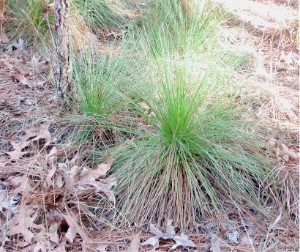Longleaf pine






Longleaf Pine (Pinus palustris) is a species of pine native to the southeastern United States, from eastern Texas to Florida, and north to southeastern Virginia. This tree is known for its long needles, which can be up to 18 inches in length, and for its large, robust cones. Longleaf pine forests are a critically important ecosystem, providing habitat for a wide variety of wildlife, including several endangered species. The longleaf pine ecosystem is one of the most biodiverse in North America, but it has been dramatically reduced in size due to logging, land conversion, and fire suppression.
Description[edit]
The Longleaf Pine can reach heights of 100 to 120 feet and a diameter of 2.5 feet. It has a straight trunk with a very high crown of foliage, making it a dominant tree in its ecosystem. The bark is thick, scaly, and reddish-brown. The long, slender needles are grouped in bundles of three and can be 8 to 18 inches long. The cones are also large, measuring 6 to 10 inches in length.
Ecology[edit]
Longleaf Pine forests are adapted to a fire ecology, with natural wildfires occurring every 1 to 10 years. These fires are essential for the regeneration of the species, as they clear out competing vegetation and release seeds from the cones. The Longleaf Pine is also known for its long lifespan, with some trees living over 300 years. This ecosystem supports a variety of plant and animal species, including the Red-cockaded Woodpecker, Gopher Tortoise, and numerous species of plants that are found nowhere else.
Conservation[edit]
The Longleaf Pine ecosystem has been reduced to less than 5% of its original area due to extensive logging in the 19th and 20th centuries, land conversion for agriculture and urban development, and suppression of natural fires. Conservation efforts are underway to restore these forests through controlled burns, planting of Longleaf Pine, and protection of existing forests. These efforts are critical for the survival of many species that depend on this habitat.
Uses[edit]
Historically, Longleaf Pine was a significant source of timber, tar, pitch, and turpentine, which were important naval stores for shipbuilding and maintenance. Today, it is valued for its wood, which is used in construction due to its strength, resistance to rot and insects, and its aesthetic qualities.
See Also[edit]
Ad. Transform your life with W8MD's Budget GLP-1 injections from $75


W8MD offers a medical weight loss program to lose weight in Philadelphia. Our physician-supervised medical weight loss provides:
- Weight loss injections in NYC (generic and brand names):
- Zepbound / Mounjaro, Wegovy / Ozempic, Saxenda
- Most insurances accepted or discounted self-pay rates. We will obtain insurance prior authorizations if needed.
- Generic GLP1 weight loss injections from $75 for the starting dose.
- Also offer prescription weight loss medications including Phentermine, Qsymia, Diethylpropion, Contrave etc.
NYC weight loss doctor appointmentsNYC weight loss doctor appointments
Start your NYC weight loss journey today at our NYC medical weight loss and Philadelphia medical weight loss clinics.
- Call 718-946-5500 to lose weight in NYC or for medical weight loss in Philadelphia 215-676-2334.
- Tags:NYC medical weight loss, Philadelphia lose weight Zepbound NYC, Budget GLP1 weight loss injections, Wegovy Philadelphia, Wegovy NYC, Philadelphia medical weight loss, Brookly weight loss and Wegovy NYC
|
WikiMD's Wellness Encyclopedia |
| Let Food Be Thy Medicine Medicine Thy Food - Hippocrates |
Medical Disclaimer: WikiMD is not a substitute for professional medical advice. The information on WikiMD is provided as an information resource only, may be incorrect, outdated or misleading, and is not to be used or relied on for any diagnostic or treatment purposes. Please consult your health care provider before making any healthcare decisions or for guidance about a specific medical condition. WikiMD expressly disclaims responsibility, and shall have no liability, for any damages, loss, injury, or liability whatsoever suffered as a result of your reliance on the information contained in this site. By visiting this site you agree to the foregoing terms and conditions, which may from time to time be changed or supplemented by WikiMD. If you do not agree to the foregoing terms and conditions, you should not enter or use this site. See full disclaimer.
Credits:Most images are courtesy of Wikimedia commons, and templates, categories Wikipedia, licensed under CC BY SA or similar.
Translate this page: - East Asian
中文,
日本,
한국어,
South Asian
हिन्दी,
தமிழ்,
తెలుగు,
Urdu,
ಕನ್ನಡ,
Southeast Asian
Indonesian,
Vietnamese,
Thai,
မြန်မာဘာသာ,
বাংলা
European
español,
Deutsch,
français,
Greek,
português do Brasil,
polski,
română,
русский,
Nederlands,
norsk,
svenska,
suomi,
Italian
Middle Eastern & African
عربى,
Turkish,
Persian,
Hebrew,
Afrikaans,
isiZulu,
Kiswahili,
Other
Bulgarian,
Hungarian,
Czech,
Swedish,
മലയാളം,
मराठी,
ਪੰਜਾਬੀ,
ગુજરાતી,
Portuguese,
Ukrainian
